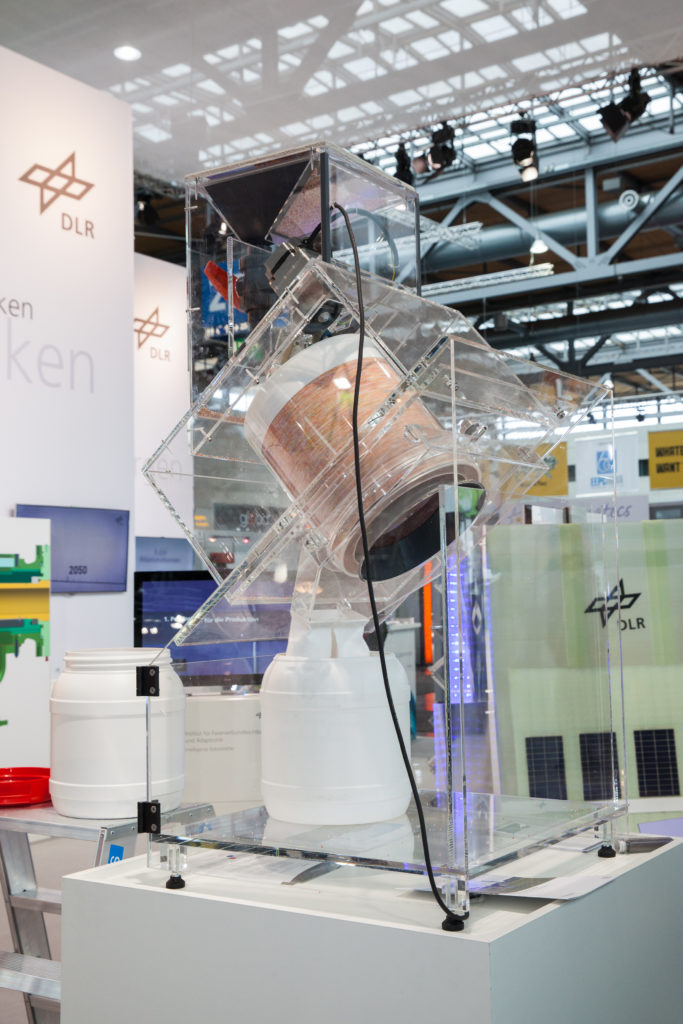Rotating ceramic particles for higher temperatures in solar tower power plants
In a solar tower power plant, numerous flat, sun-tracking mirrors – referred to as heliostats – focus sunlight onto a receiver at the top of a tall tower. The technology of the new centrifugal receiver CentRec, developed at the Institute of Solar Research uses small ceramic spheres (bauxite particles) to absorb, transfer and store heat in one medium. They measure approximately one millimetre across. One advantage of the ceramic particles – compared to the molten salt that is otherwise used – is that they can withstand higher temperatures of up to 1000 degrees Celsius. They are also cheaper, pose no danger to the environment and are easier to store and transport than molten salt.
The solar receiver CentRec is a rotating cylinder. It sits at the top of the solar tower and its axis is inclined downward towards the heliostat field. The particles are fed into the receiver at the top. Centrifugal forces push them against the inner wall of the cylinder. Through the opening to the heliostat field, the concentrated solar radiation hits the dark ceramic particles directly and heats them up. Gravity causes the particles to fall slowly along the inner wall until they finally reach a temperature of up to 1000 degrees Celsius and fall into a container. By adjusting the rotational speed, it is possible to control how long the particles remain in the CentRec receiver, making it possible to achieve the same temperature even when the intensity of the Sun varies.
The ceramic particles transfer the heat. This heat energy can be used to generate steam for power production. Alternatively, the steam can also be used in industrial processes. Another interesting possibility is to store the heated particles and thus the heat they contain for many hours, so that they can then be used for the continuous production of electricity at night, for example.
A prototype of the CentRec solar receiver has already been successfully tested in DLR’s solar thermal power plant, the Solar Tower in Jülich. As part of the EU-funded HiFlex project, the concept will be used for the first time in an Italian pasta factory.
Link:
German Aerospace Center (DLR)
Institute of Solar Research
Dr. Eckhard Lüpfert | Email Eckhard.Luepfert@dlr.de
